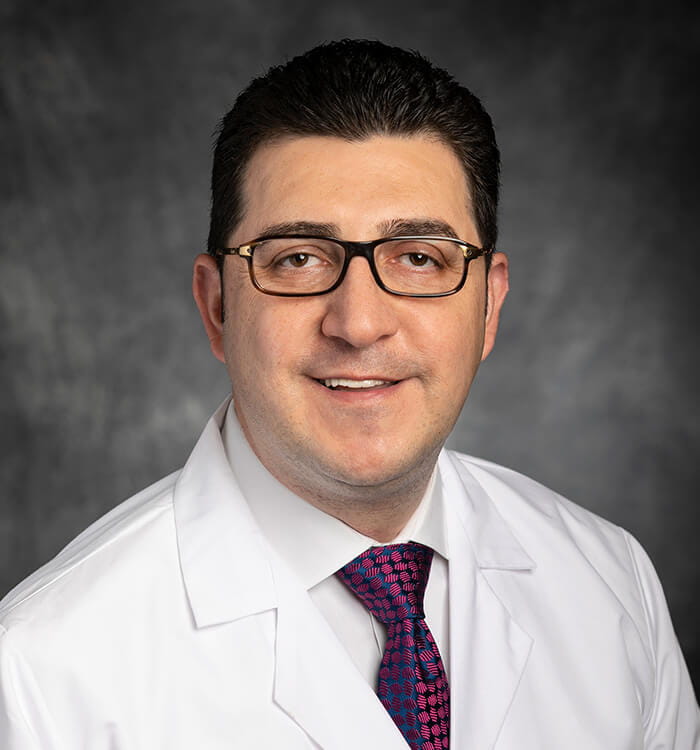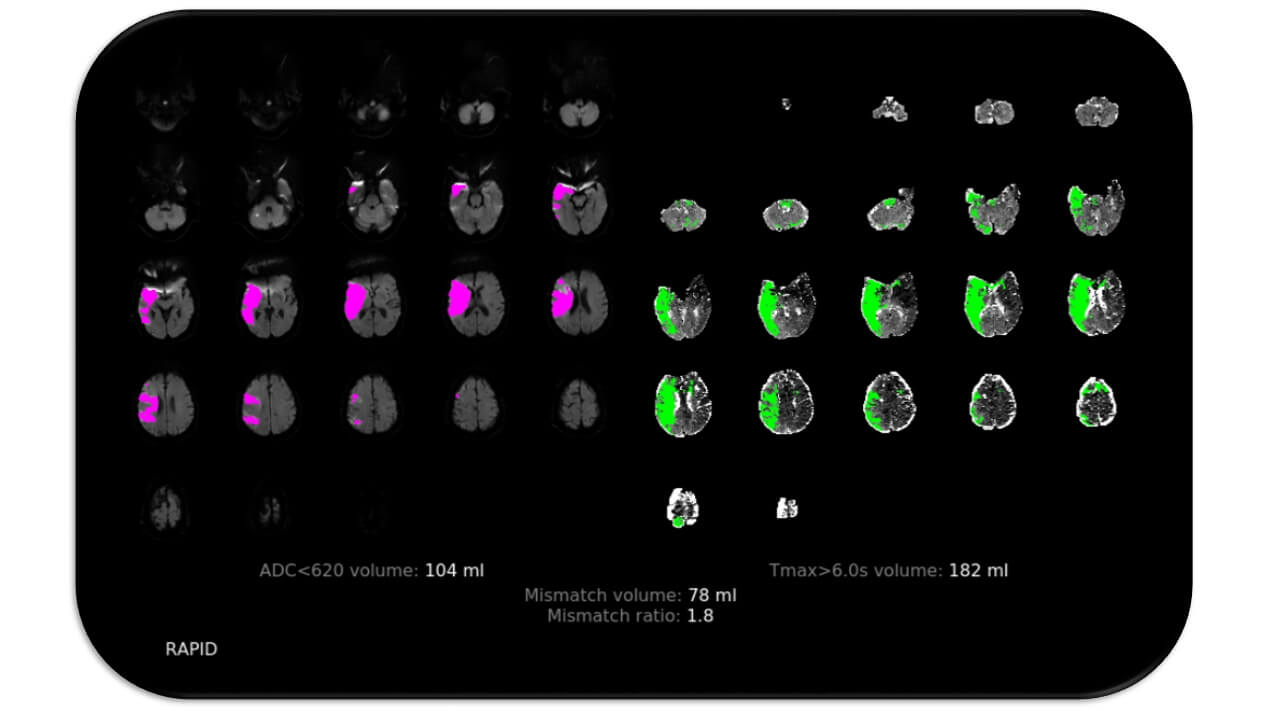Global SELECT2 Clinical Trial Studies Endovascular Thrombectomy in Large Core Infarct Patients
May 31, 2022
Innovations in Neurology & Neurosurgery | Summer 2022
University Hospitals Cleveland Medical Center is the coordinating center for an international clinical investigation of the safety and efficacy of endovascular thrombectomy (EVT) in patients presenting with acute ischemic stroke due to large vessel occlusion and large-core infarcts. Amrou Sarraj, MD, is the global principal investigator for SELECT2, a randomized controlled trial that has enrolled over 300 patients at more than 30 sites worldwide, including in the United States, Canada, Europe, Australia and New Zealand.
 Amrou Sarraj, MD
Amrou Sarraj, MDStarted in 2019, the SELECT2 trial is a collaboration with The University of Texas Health Science Center, Houston (UT), where Dr. Sarraj served as Vice-Chair of Clinical Quality for the Department of Neurology prior to joining University Hospitals in 2021. Funded through a grant from Stryker Neurovascular, the investigator-initiated trial is a blinded endpoint assessment of patients within 24 hours of acute stroke presentation.
“This is uncharted territory,” says Dr. Sarraj, Director of the University Hospitals Cerebrovascular Center and Comprehensive Stroke Center and primary designer of the trial. “Patients with significant ischemic changes, known as large core, have largely been excluded from investigation of thrombectomy because they have lower likelihood of benefit and higher risk of hemorrhage compared to patients with smaller strokes or areas of infarct.”
EVT is an image-guided procedure initiated at the groin to mechanically remove or aspirate the culprit clot. “By addressing the clot directly, interventionalists achieve rapid restoration of blood flow and improved clinical outcomes,” says Dr. Sarraj.
While thrombectomy is the accepted standard of care for most patients presenting with LVO, approximately 20 percent of individuals are excluded from the procedure due to extensive damage to brain tissue.
“This is a significant number of patients who do not have effective treatment options beyond standard medical management at this time,” says Dr. Sarraj. “The hope is that our study will open the door for improved survivability and likelihood that individuals will return to functional independence despite suffering a potentially debilitating stroke.”
Rapid Stroke Care
Best practices stroke care often begins in the emergency department. The first hospital system in Northeast Ohio to achieve The Joint Commission’s rigorous standards for Comprehensive Stroke Center Certification, University Hospitals offers stroke rapid response teams at multiple locations throughout Northeast Ohio.
“Successful treatment for acute stroke requires intervention in the initial hours of onset,” says Dr. Sarraj. “The advanced level of training at our stroke hospitals enables us to quickly escalate patients to the necessary level of care, including consideration for EVT and study enrollment for appropriate patients.”
Study Criteria
SELECT2 is the world’s largest ongoing clinical trial in acute stroke management. Study participants are randomized in a one-to-one ratio into thrombectomy plus medical management vs. medical management alone. Outcomes are measured at baseline, 24 hours post-discharge, 30 days, 90 days and one year.
Key Patient Inclusion Criteria:
- Adults (18-85 y) with the diagnosis of acute ischemic stroke
- Imaging confirming large artery occlusion in the distal ICA or MCA M1 locations
- 0 to 24 hours between last known well and treatment
- Eligible for EVT with stent retriever/aspiration or medical management
Advanced Imaging
Determining study eligibility relies on analysis of simple, non-contrast computed tomography (CT) and advanced perfusion imaging. Perfusion mapping is dependent upon sophisticated machine learning algorithms and scanning protocols that utilize an intravascular tracer and serial imaging. A secondary aim of the study will look at clinical outcomes when there are discordant imaging profiles (one modality favorable for EVT, the other unfavorable). “Image selection prior to treatment is a major question we hope to address,” says Dr. Sarraj.
 Image caption: Illustrative Perfusion imaging results for SELECT2 trial eligible patient, representing 104 ml of brain tissue with irreversible ischemic injury (ischemic core (rCBF<30%) tissue – pink) and 182 ml of brain tissue with reduced blood flow (critically hypoperfused (Tmax>6s) tissue – green), suggesting 78 ml of salvageable brain tissue.
Image caption: Illustrative Perfusion imaging results for SELECT2 trial eligible patient, representing 104 ml of brain tissue with irreversible ischemic injury (ischemic core (rCBF<30%) tissue – pink) and 182 ml of brain tissue with reduced blood flow (critically hypoperfused (Tmax>6s) tissue – green), suggesting 78 ml of salvageable brain tissue.In his role at University Hospitals, Dr. Sarraj has installed state-of-the-art advanced perfusion imaging capabilities at main campus and is in the process of disseminating the technology across the system. “We believe that this clinical trial and the addition of advanced imaging technologies are significant steps toward advancing world-class stroke care at University Hospitals,” he says.
For more information, contact Dr. Sarraj at Amrou.Sarraj@UHhospitals.org.
Contributing Expert:
Amrou Sarraj, MD
Director of the Cerebrovascular Center and Comprehensive Stroke Center
University Hospitals Cleveland Medical Center
Director of Stroke Systems
University Hospitals Neurological Institute
Professor of Neurology and George M Humphrey II Endowed Chair
Case Western Reserve University School of Medicine


